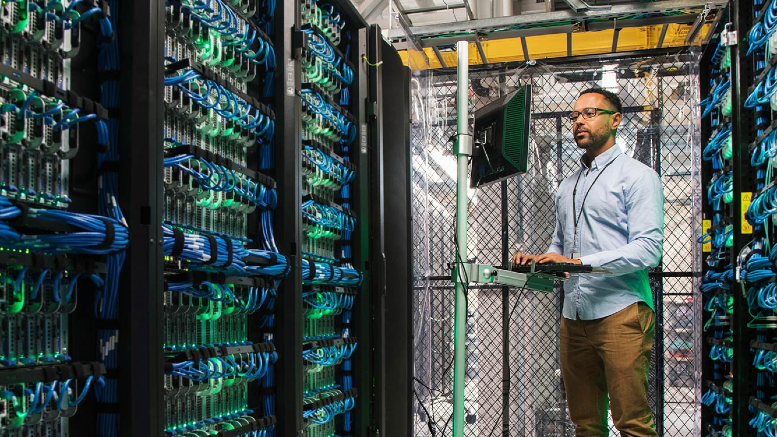How device subscription services are fulfilling public sector IT priorities
August 13, 2024 / Tim Rashkin
Short on time? Read the key takeaways:
- Local and state governments must juggle increased needs for modernization and cybersecurity, while maintaining cost-efficiency.
- State CIOs are prioritizing enhancements like cybersecurity, digital services and artificial intelligence. Managing a device fleet to handle these advancements at scale is cost-prohibitive and ties up IT resources on logistics.
- Device subscription services (DSS) outsource the burden of device management and reduce risk and cost. DSS is flexible and scalable, allowing CIOs to meet requirements for modernization and cybersecurity within budgetary limitations.
- DSS facilitates a new model for state CIOs, allowing them to act as advisors and focus on partnerships and strategy rather than implementation.
All organizations must keep pace with technological change, and the public sector is no exception. However, state and local governments face unique criteria when modernizing their IT infrastructure.
They must balance innovation with public-sector budgets, heightened security needs, and diverse constituency demands. As technology evolves, public sector IT leaders are tasked with finding creative solutions that meet these complex criteria while delivering efficient, secure, and user-friendly services to both employees and the public.
In this context, the National Association of State Chief Information Officers (NASCIO) has identified the top 10 priorities for CIOs, highlighting areas where technology can significantly improve government operations. From artificial intelligence and digital services to workforce asset management, these priorities reflect the complex challenges and exciting opportunities facing government technology leaders.
As public sector IT leaders seek solutions to address these priorities, one innovative approach is gaining traction: device subscription services (DSS). This model offers a comprehensive solution that aligns closely with many of NASCIO's key focus areas.
DSS handles device management from end to end in an OpEx model, allowing organizations to offload the responsibility for the entire device cycle – from deployment to retirement – while receiving robust security and service support. This approach addresses many of the priorities set by NASCIO but does so in a cost-effective manner that suits public sector budgets. Here are the ways that DSS aligns with NASCIO’s top priorities.
1. Cybersecurity and risk management
DSS provides advanced endpoint protection to ensure that devices are only accessible to the right hands. It also offers secure device configuration, decommissioning and data-wiping capabilities so that the levels of access change along with the device’s purposes and that retired devices leave no trace of a previous user’s activity. A good DSS will also streamline vendor management, assessing options and managing the vendor relationship, which reduces third-party risks.
2. Digital government and digital services
It’s all very well to introduce digital services to the public, but employees need the devices that support those services at the level they desire. Modern hardware—which can be replaced easily in the as-a-service model—supports accessibility initiatives. DSS can provide hardware on demand suited to increased needs for identity management and privacy protection, making you agile with digitization.
3. Artificial intelligence and automation
DSS leverages automation at every point possible, and the automation process is enriched over time as new capabilities arise. Some of these include AI-driven predictive maintenance so that you can replace or fix devices before a crisis point. DSS also supports automated device provisioning and decommissioning and allows for integrating AI chatbots for device support. You can save human personnel for more mission-critical tasks while staying ahead of problems.
4. Legacy modernization
DSS provides modern devices that support updated applications so employees can always access the latest crisis, software and communications solutions. Because it’s a service, DSS can gradually improve your legacy infrastructure with cost-effective hardware upgrades, and you can keep older devices still working well. DSS enables a much smoother transition from outdated systems at an efficient and predictable price.
5. Workforce transformation
State CIOs are focusing on a future for the government workforce that involves a new relationship to knowledge skills and role assignments and a new dynamic for IT asset management, business relationship management and service integration. DSS offers flexible device options for remote and hybrid work and is scalable for changing workforce needs. It also supports a fundamental shift from IT roles focused on support to strategic management.
6. Data management and analytics
DSS replaces estimations with analytics. It generates valuable telemetry data from devices to monitor their health in real time, enabling predictive analytics for proactive device management. It also supports big data initiatives you may pursue by providing capable hardware matching the task.
7. Broadband and wireless connectivity
Better wireless connectivity is only valuable when your employees have devices capable of accessing it. DSS ensures devices are compatible with the latest connectivity standards and supports your mobile workforce with appropriate devices that can take advantage of increased connectivity.
8. Identity and access management
DSS facilitates multi-factor authentication and supports granular access control across device fleets. You can work with the service to align with your broader digital identity standards, ensuring that classified information is only available to people with the right clearance.
9. Cloud services
DSS integrates seamlessly with any of your cloud strategies, and you can even match the device to suit the strategy. For example, you can lean into the entire Microsoft suite and outfit spaces with Microsoft Teams Rooms to transition to Microsoft Azure. The service can also enhance security for cloud-connected devices and leverage the cloud for scalable device management.
10. New operating model with CIO as a broker
NASCIO’s final list item is the new state CIO operating model, where the CIO acts as a trusted advisor in device strategy at a higher management level. By leveraging DSS, CIOs can effectively embrace this new operating model.
DSS frees CIOs from the minutiae of device management, allowing them to focus on strategic decision-making and cross-agency collaboration. With DSS handling operational aspects, CIOs can:
- Offer expert guidance on technology trends and their impact on government operations
- Facilitate partnerships between agencies and technology providers
- Develop overarching IT strategies that align with broader government objectives
- Advise on cost-effective solutions that meet diverse agency needs
- Focus on innovation and digital transformation initiatives
By recommending DSS, CIOs demonstrate their ability to identify solutions that address both technical and organizational challenges, reinforcing their position as valuable strategic partners in government modernization efforts.
Find out how device management with Unisys can help you meet your IT priorities.




















